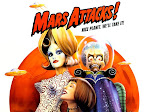Ireland has a rich history in science and is known for its excellence in scientific research conducted at its many universities and institutions.
Noted particularly are Ireland's contributions to fiber optics technology and related technologies.The Irish philosopher and theologian Johannes Scotus Eriugena (c. 815–877) was considered one of the leading intellectuals of his era. Sir Ernest Henry Shackleton was an Anglo-Irish explorer who was one of the principal figures of the period known as the Heroic Age of Antarctic Exploration. He along with his expedition discovered the approximate location of the South Magnetic Pole on 16 January 1909 .Robert Boyle (1627–1691) was an Irish natural philosopher, chemist, physicist, inventor and early gentleman scientist, largely regarded one of the founders of modern chemistry. He is best known for the formulation of Boyle's law, stating that the pressure and volume of an ideal gas are inversely proportional.[82]Irish physicist John Tyndall (1820-1893) discovered the Tyndall effect, explaining why the sky is blue.Irish physicist Ernest Walton won the 1951 Nobel Prize in Physics for splitting the nucleus of the atom by artificial means. William Thomson, 1st Baron Kelvin (or Lord Kelvin) which the absolute temperature unit Kelvin is named after. George Johnstone Stoney introduced the term electron in 1891.Perhaps most important, distillers such as Jameson and Bushmill and brewmasters such as Guinness have refined their sciences to a high art. (Recent research has clearly shown that God invented whiskey so the Irish would not rule the world.)
The Irish People
Ireland has been populated for around 9,000 years (per archaeological studies), with the Irish people's earliest ancestors recorded[8] as the Nemedians, Fomorians, Fir Bolgs, Tuatha Dé Danann and the Milesians (in legend - there is no written historical record before the 6th century)—the last group supposedly representing the "pure" Gaelic ancestry, and still serving as a term for the Irish race today. The main groups that interacted with the Irish in the Middle Ages include the Scottish people and the Vikings, with the Icelanders especially having some Irish descent. The Anglo-Norman invasion of the High Middle Ages, the English plantations and the subsequent English rule of the country introduced the Normans, Welsh, Flemish, Anglo-Saxons, and Bretons into Ireland.There have been many notable Irish people throughout history. The 6th century Irish monk and missionary Columbanus is regarded as one of the "fathers of Europe", followed by Kilian of Würzburg and Vergilius of Salzburg. Famous Irish explorers include Brendan the Navigator, Ernest Shackleton, and Tom Crean. By some accounts, the first European child born in North America had Irish descent on both sides;[10] while an Irishman was also the first to set foot on American soil in Columbus' expedition of 1492.[11]The Irish people are most famous for their writers. Until the end of the early modern period, the majority of educated Irish were proficient at both speaking and writing in Latin and Greek.[12] Notable Irish writers in the English language include Jonathan Swift, James Joyce, Oscar Wilde, William Butler Yeats, Samuel Beckett, Patrick Kavanagh and Seamus Heaney. Some of the 20th century writers in the Irish language include Brian O'Nolan, Peig Sayers, Muiris Ó Súilleabháin and Máirtín Ó Direáin.
People of Irish ethnicity are common in many western countries, particularly in English-speaking countries.
Historically, emigration has been caused by politics, religious oppression and economic issues. Over 80 million people make up the Irish diaspora today, which includes Great Britain, Australia, Canada, Argentina, New Zealand, Mexico, France, Germany and Brazil.
The largest number of people of Irish descent live in the United States—about ten times more than in Ireland itself.
Subscribe to:
Post Comments (Atom)





































No comments:
Post a Comment